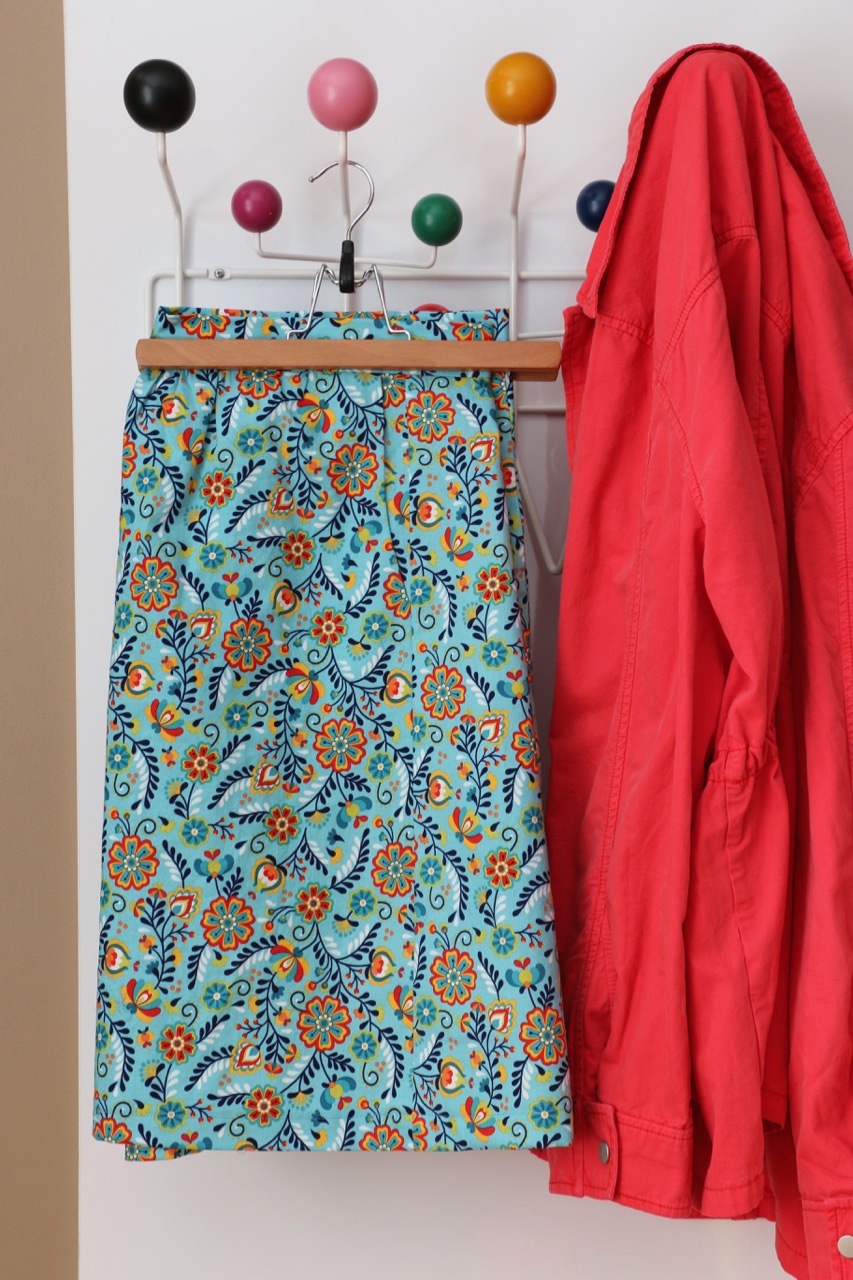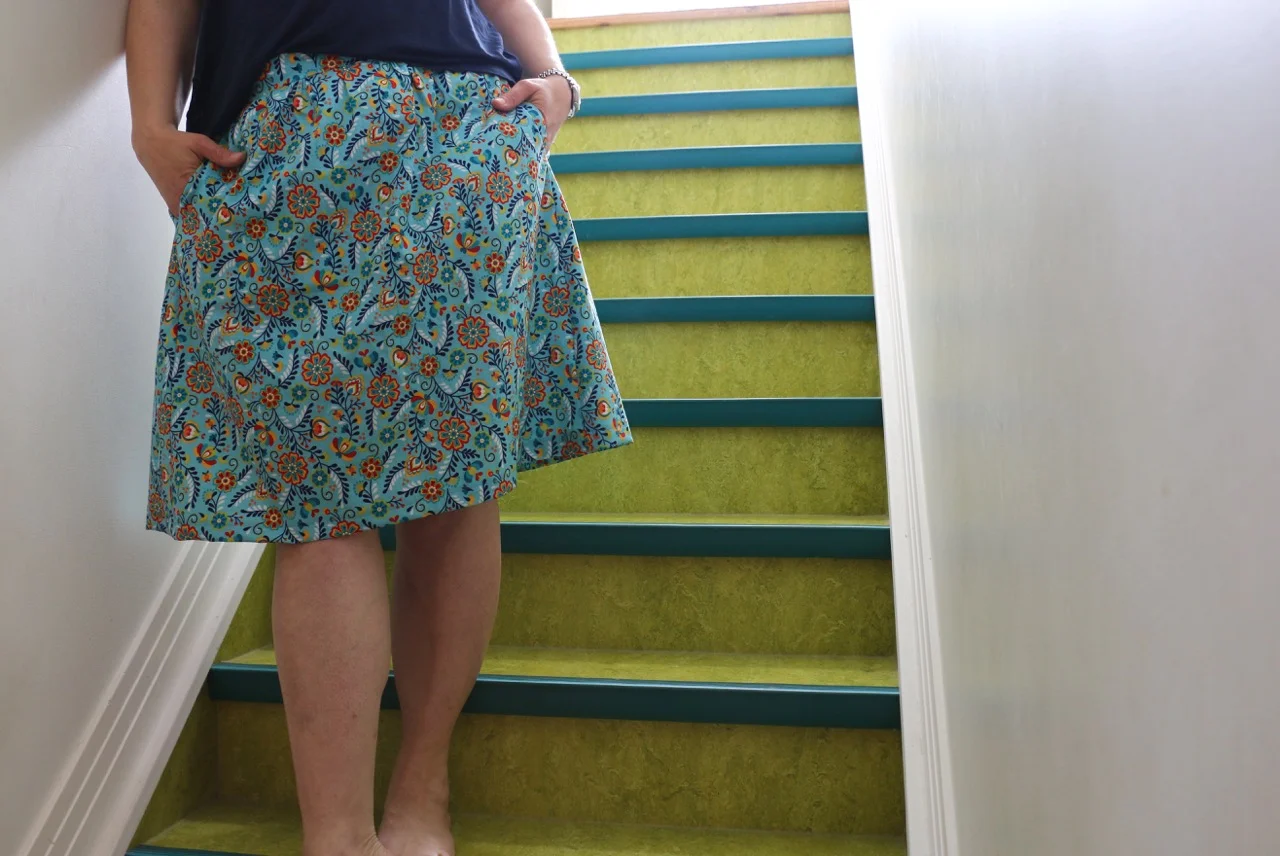Don't mind me, I'm just over here pretending it is spring. Despite the recent snow on the ground I am feeling decidedly spring-like in my new skirt. Betz White's new fabric for Riley Blake, Juxtaposey, is the perfect fit for this time of year. The Everyday skirt by Liesl and Co is also a perfect fit for me. As soon as I saw the fabric and Betz asked if I wanted to play with it I knew these two beauties would be perfect for each other.
It is wonderful to see Betz White designing fabric again. She has a really strong, interesting sense of colour. Between her ornament patterns, eco-throws, and bags she also has a great eye for what looks good.
Juxtaposey calls on textile design from around the world. Betz brings together motifs from different traditions, highlights her love of wool in the collection itself and with the llama featured throughout. It is one of those fabric lines with something for everyone. This floral immediately called out to me.
I will admit, I was hesitant about using quilting cotton with this Everyday Skirt pattern. I've only ever made it with rayon. As my butt is already big, would the gathers of the waist make it worse? Turns out, nope. That's because my butt is already big. The not a full skirt, not an a-line of this pattern just seems to work for me.
If it would ever stop snowing I will happily put this skirt into heavy rotation in my spring and summer wardrobe. My daughter asked for one as well. I'm all for cute, but that's a bit much! No, Juxtaposey is all mine. Well, at least in this house. You can get it yourself in stores now.
Disclosure: Riley Blake provided me with the fabric to make this skirt. I purchased the Every Day Skirt pattern myself from The Workroom.







